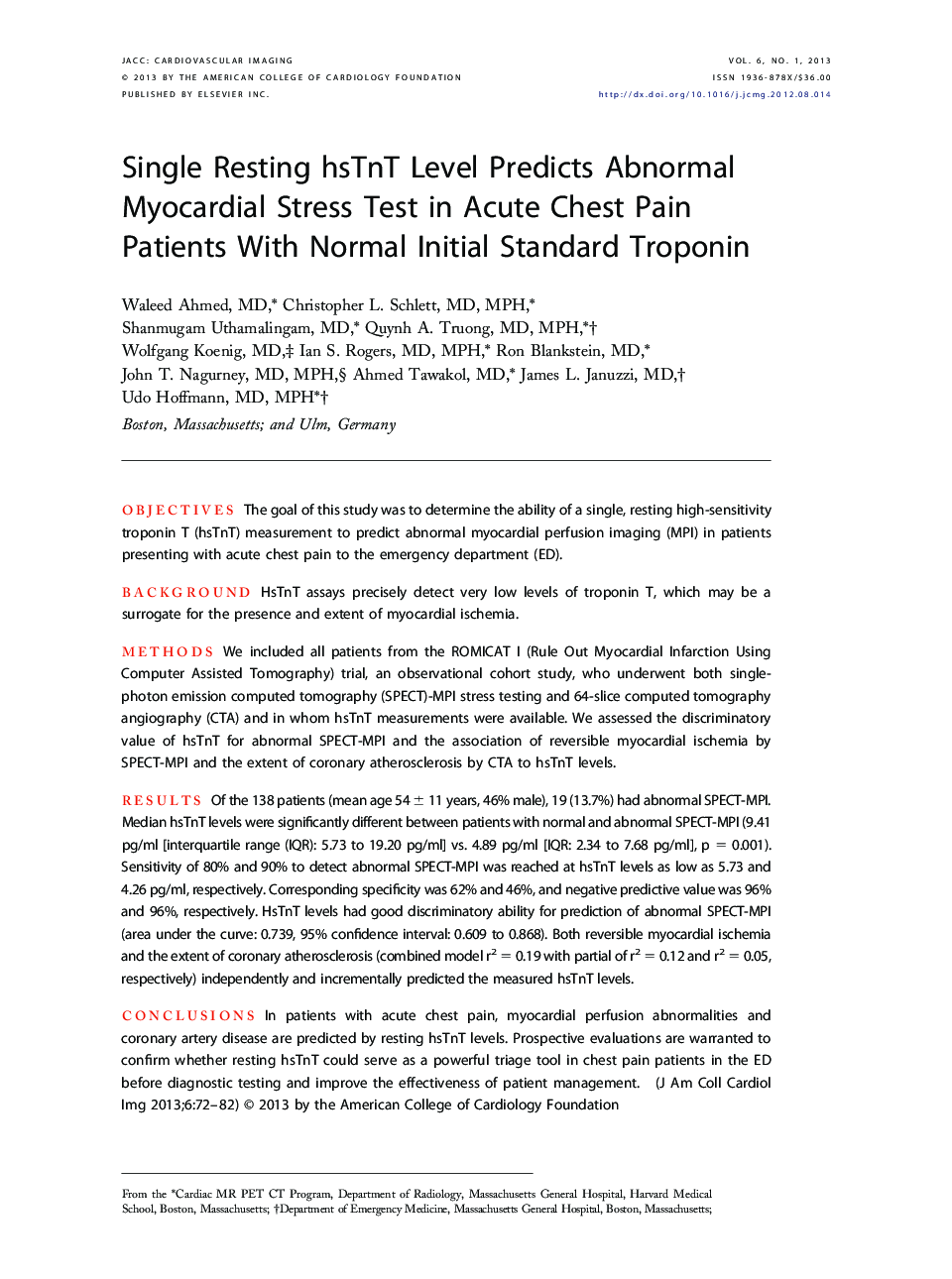| Article ID | Journal | Published Year | Pages | File Type |
|---|---|---|---|---|
| 2938088 | JACC: Cardiovascular Imaging | 2013 | 11 Pages |
ObjectivesThe goal of this study was to determine the ability of a single, resting high-sensitivity troponin T (hsTnT) measurement to predict abnormal myocardial perfusion imaging (MPI) in patients presenting with acute chest pain to the emergency department (ED).BackgroundHsTnT assays precisely detect very low levels of troponin T, which may be a surrogate for the presence and extent of myocardial ischemia.MethodsWe included all patients from the ROMICAT I (Rule Out Myocardial Infarction Using Computer Assisted Tomography) trial, an observational cohort study, who underwent both single-photon emission computed tomography (SPECT)-MPI stress testing and 64-slice computed tomography angiography (CTA) and in whom hsTnT measurements were available. We assessed the discriminatory value of hsTnT for abnormal SPECT-MPI and the association of reversible myocardial ischemia by SPECT-MPI and the extent of coronary atherosclerosis by CTA to hsTnT levels.ResultsOf the 138 patients (mean age 54 ± 11 years, 46% male), 19 (13.7%) had abnormal SPECT-MPI. Median hsTnT levels were significantly different between patients with normal and abnormal SPECT-MPI (9.41 pg/ml [interquartile range (IQR): 5.73 to 19.20 pg/ml] vs. 4.89 pg/ml [IQR: 2.34 to 7.68 pg/ml], p = 0.001). Sensitivity of 80% and 90% to detect abnormal SPECT-MPI was reached at hsTnT levels as low as 5.73 and 4.26 pg/ml, respectively. Corresponding specificity was 62% and 46%, and negative predictive value was 96% and 96%, respectively. HsTnT levels had good discriminatory ability for prediction of abnormal SPECT-MPI (area under the curve: 0.739, 95% confidence interval: 0.609 to 0.868). Both reversible myocardial ischemia and the extent of coronary atherosclerosis (combined model r2 = 0.19 with partial of r2 = 0.12 and r2 = 0.05, respectively) independently and incrementally predicted the measured hsTnT levels.ConclusionsIn patients with acute chest pain, myocardial perfusion abnormalities and coronary artery disease are predicted by resting hsTnT levels. Prospective evaluations are warranted to confirm whether resting hsTnT could serve as a powerful triage tool in chest pain patients in the ED before diagnostic testing and improve the effectiveness of patient management.
